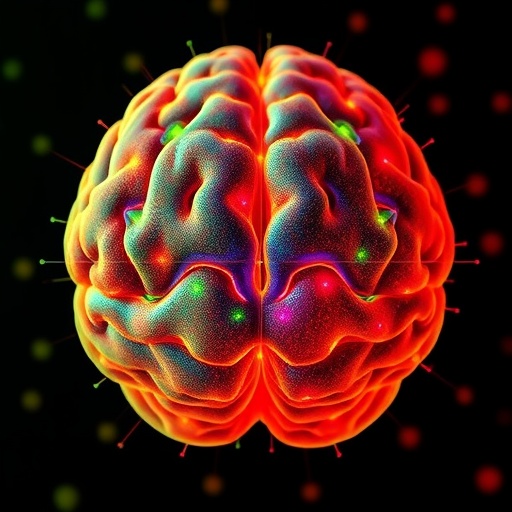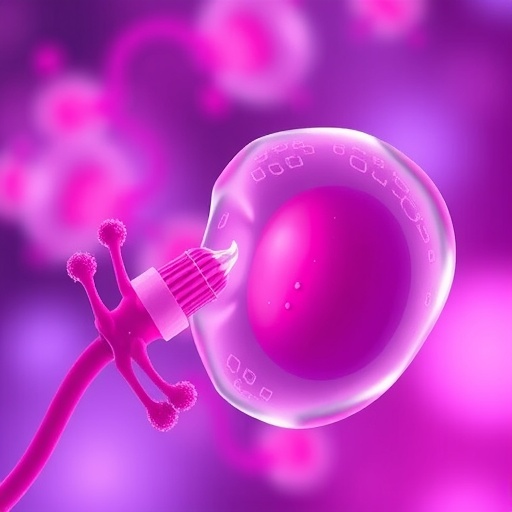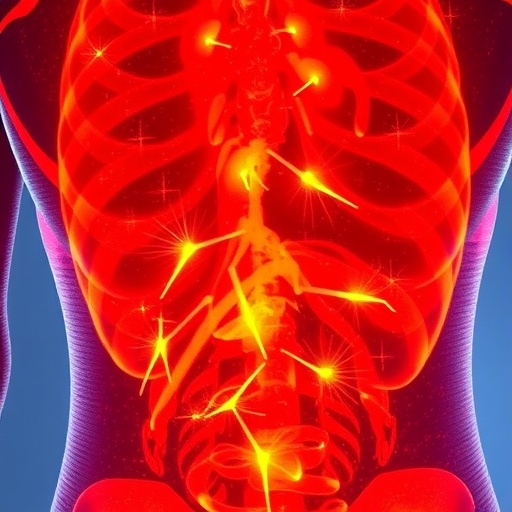
In the dynamic field of computational drug discovery, an innovative research study has emerged, exemplifying the synergistic potential of machine learning and quantitative structure-activity relationship (QSAR) approaches. This groundbreaking work, spearheaded by researchers Sajal and Mishra, focuses on the structural and predictive analysis of novel and repurposed acid ceramidase (ASAH1) inhibitors specifically tailored for the treatment of glioblastoma, a notoriously aggressive form of brain cancer. This study represents a significant step forward in the quest for effective therapeutic agents against this debilitating disease, leveraging the power of artificial intelligence to streamline and enhance drug discovery processes.
At the heart of this research lies the application of machine learning algorithms, which have revolutionized numerous domains, including healthcare, finance, and transportation. The integration of these algorithms into the realm of drug discovery has opened new avenues for identifying potential therapeutic candidates, significantly reducing the time and financial cost associated with traditional drug development pathways. By employing a QSAR framework, the researchers have harnessed the vast datasets available in the domain of chemical compounds, creating predictive models that can accurately estimate the biological activity of new compounds against the ASAH1 target.
Acid ceramidase (ASAH1) is an enzyme that plays a critical role in lipid metabolism and has been implicated in various pathophysiological conditions, particularly in the context of cancer. Glioblastoma, characterized by rapid cell proliferation and a propensity for invasion, poses significant challenges to existing therapeutic strategies. Current treatments have had limited success, often leading to poor patient outcomes. This highlights the urgent need for novel approaches that can target the unique biochemical pathways involved in glioblastoma progression. By focusing on ASAH1 inhibitors, Sajal and Mishra aim to tap into an underexplored mechanism that could potentially lead to more effective therapies.
The QSAR models developed in this study utilize extensive datasets comprised of both known ASAH1 inhibitors and a variety of chemical descriptors. These descriptors serve as quantitative representations of the molecular characteristics that influence biological activity. Machine learning algorithms, such as support vector machines and random forests, are trained on this dataset, allowing the researchers to discern intricate patterns that correlate specific molecular features with inhibitory potency. This sophisticated modeling approach not only predicts the activity of new compounds but also provides insightful structural information that can guide further chemical modifications.
One of the most compelling aspects of the study is its focus on repurposed compounds, which can significantly expedite the drug discovery timeline. By identifying existing drugs that may exert inhibitory effects on ASAH1, the researchers aim to repurpose these agents for glioblastoma treatment. This strategy not only presents a cost-effective solution but also minimizes the regulatory hurdles typically associated with developing new drugs from scratch. The ability to pivot known compounds into new therapeutic contexts demonstrates the versatility and practicality of the machine learning-based QSAR approach.
The implications of Sajal and Mishra’s research extend beyond glioblastoma, as the methodologies developed could be applied to a wider range of cancer types and therapeutic targets. The flexibility of machine learning algorithms enables researchers to adapt and refine their models based on evolving datasets, thereby continuously improving prediction accuracy. Furthermore, as the field of data science progresses, the potential for integrating additional variables—such as patient genomic profiles—could pave the way for personalized medicine approaches that tailor therapies to individual patients’ unique biological characteristics.
In a landscape where big data plays a pivotal role, the study highlights the necessity of interdisciplinary collaboration between chemists, biologists, and data scientists. The fusion of knowledge from these diverse fields is critical for the successful advancement of drug discovery efforts. As exemplified by Sajal and Mishra, bridging these disciplines can lead to innovative solutions that address complex medical challenges. The collaborative environment fosters creativity, leading to breakthroughs that would be difficult to achieve in silos.
While promising, the study also underscores the complexities and challenges inherent in translating in silico predictions into real-world clinical applications. Validating the findings in biological assays remains a crucial next step in the research process. Laboratory experiments will yield invaluable data regarding the safety and efficacy of the predicted ASAH1 inhibitors, informing subsequent phases of drug development. This iterative process of hypothesis generation, validation, and refinement exemplifies the scientific method, which remains foundational in the quest for effective cancer therapies.
The prospect of leveraging ASAH1 inhibitors for glioblastoma therapy represents a beacon of hope for patients confronting this aggressive cancer. As researchers continue to refine their computational models and validate their findings through experimental studies, the potential for developing effective treatments seems increasingly attainable. Sajal and Mishra’s innovative research exemplifies the convergence of technology and biology, showcasing how machine learning can catalyze advancements in drug discovery, ultimately leading to improved patient outcomes.
As the scientific community begins to recognize the transformative potential of machine learning in medicine, it is imperative to ensure that researchers are equipped with the necessary tools, skills, and infrastructure to leverage these technologies effectively. Training initiatives and resource allocation will play a crucial role in fostering the next generation of scientists capable of navigating the complexities of data-driven research. Ultimately, the integration of machine learning in biomedical research signifies a shift towards a more data-centric approach, one that holds promise for tackling some of the most daunting challenges in modern medicine.
In summary, Sajal and Mishra’s study embodies a transformational approach to drug discovery through the innovative use of machine learning-based QSAR methodologies targeting ASAH1 for glioblastoma therapy. By combining computational predictions with experimental validation, this research contributes to a burgeoning field that seeks to enhance the efficacy and efficiency of drug development. As we look to the future, the implications of such studies will ripple throughout the healthcare landscape, potentially revolutionizing our approach to cancer treatment and beyond.
Subject of Research: Acid ceramidase (ASAH1) inhibitors for glioblastoma therapy.
Article Title: An innovative machine learning-based QSAR approach for prediction and structural analysis of novel/repurposed acid ceramidase (ASAH1) inhibitors for glioblastoma therapy.
Article References:
Sajal, H., Mishra, S. An innovative machine learning-based QSAR approach for prediction and structural analysis of novel/repurposed acid ceramidase (ASAH1) inhibitors for glioblastoma therapy.
Mol Divers (2025). https://doi.org/10.1007/s11030-025-11281-9
Image Credits: AI Generated
DOI: 10.1007/s11030-025-11281-9
Keywords: Machine learning, QSAR, acid ceramidase, glioblastoma, drug discovery, cancer therapy.
Tags: acid ceramidase inhibitorsAI in healthcarecomputational drug discovery techniquesglioblastoma treatment inhibitorsinnovative cancer therapiesmachine learning in drug discoverynovel therapeutic agents for cancerpredictive modeling in pharmacologyquantitative structure-activity relationshipreducing costs in drug developmentrepurposed drugs for glioblastomastructural analysis of compounds




